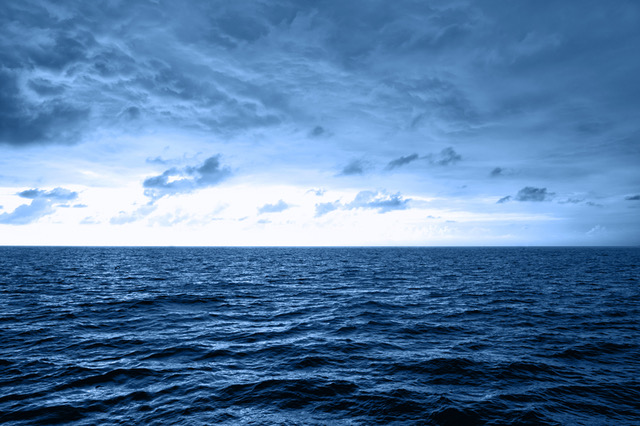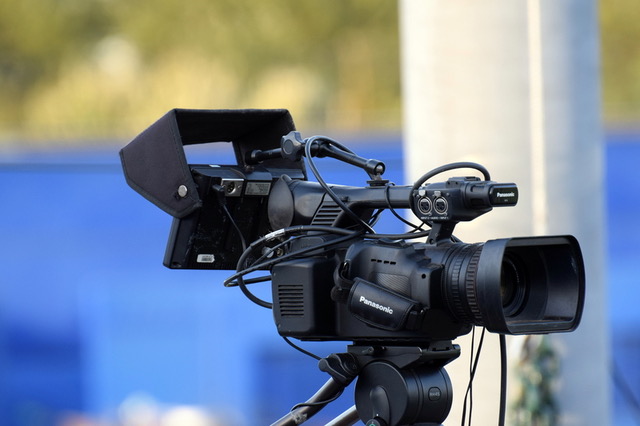
-
 Trump presses Syria leader on Israel ties after lifting sanctions
Trump presses Syria leader on Israel ties after lifting sanctions
-
Rare blue diamond fetches $21.5 mn at auction in Geneva

-
 Stock markets fluctuate as China-US trade euphoria fades
Stock markets fluctuate as China-US trade euphoria fades
-
Ousted Myanmar envoy charged with trespass in London residence row

-
 Russia jails prominent vote monitor for five years
Russia jails prominent vote monitor for five years
-
Umbro owner in joint bid for Le Coq Sportif

-
 Tom Cruise has world guessing as he unleashes 'Mission: Impossible' at Cannes
Tom Cruise has world guessing as he unleashes 'Mission: Impossible' at Cannes
-
China's Tencent posts forecast-beating Q1 revenue on gaming growth

-
 Trump presses Syria leader on Israel relations after lifting sanctions
Trump presses Syria leader on Israel relations after lifting sanctions
-
FA appoint former Man Utd sporting director Dan Ashworth as chief football officer

-
 Stop holding opponents incommunicado, UN experts tell Venezuela
Stop holding opponents incommunicado, UN experts tell Venezuela
-
Indonesian filmmakers aim to impress at Cannes

-
 Trump presses Syria leader on Israel after lifting sanctions
Trump presses Syria leader on Israel after lifting sanctions
-
French PM to testify on child abuse scandal

-
 Players stuck in middle with IPL, national teams on collision course
Players stuck in middle with IPL, national teams on collision course
-
Peru PM quits ahead of no-confidence vote

-
 Strikes kill 29 in Gaza as hostage release talks ongoing
Strikes kill 29 in Gaza as hostage release talks ongoing
-
Court raps Brussels for lack of transparency on von der Leyen vaccine texts

-
 France summons cryptocurrency businesses after kidnappings
France summons cryptocurrency businesses after kidnappings
-
Pakistan returns Indian border guard captured after Kashmir attack

-
 Baidu plans self-driving taxi tests in Europe this year
Baidu plans self-driving taxi tests in Europe this year
-
Trump meets new Syria leader after lifting sanctions

-
 Equity markets swing as China-US trade euphoria fades
Equity markets swing as China-US trade euphoria fades
-
Burberry warns 1,700 jobs at risk after annual loss

-
 Trump to meet new Syrian leader after offering sanctions relief
Trump to meet new Syrian leader after offering sanctions relief
-
'Children are innocent': Myanmar families in grief after school air strike

-
 Colombia joins Belt and Road initiative as China courts Latin America
Colombia joins Belt and Road initiative as China courts Latin America
-
Australian champion cyclist Dennis gets suspended sentence after wife's road death

-
 Protection racket? Asian semiconductor giants fear looming tariffs
Protection racket? Asian semiconductor giants fear looming tariffs
-
S. Korea Starbucks in a froth over presidential candidates names

-
 NATO hatches deal on higher spending to keep Trump happy
NATO hatches deal on higher spending to keep Trump happy
-
Eurovision stage a dynamic 3D 'playground': producer

-
 Cruise unleashes 'Mission: Impossible' juggernaut at Cannes
Cruise unleashes 'Mission: Impossible' juggernaut at Cannes
-
Suaalii in race to be fit for Lions Tests after fracturing jaw

-
 Pacers oust top-seeded Cavs, Nuggets on brink
Pacers oust top-seeded Cavs, Nuggets on brink
-
Sony girds for US tariffs after record annual net profit

-
 China, US slash sweeping tariffs in trade war climbdown
China, US slash sweeping tariffs in trade war climbdown
-
Human Rights Watch warns of migrant worker deaths in 2034 World Cup host Saudi Arabia

-
 Sony logs 18% annual net profit jump, forecast cautious
Sony logs 18% annual net profit jump, forecast cautious
-
China, US to lift sweeping tariffs in trade war climbdown

-
 Asian markets swing as China-US trade euphoria fades
Asian markets swing as China-US trade euphoria fades
-
Australian seaweed farm tackles burps to help climate

-
 Judgment day in EU chief's Covid vaccine texts case
Judgment day in EU chief's Covid vaccine texts case
-
Trump set to meet Syrian leader ahead of Qatar visit

-
 Misinformation clouds Sean Combs's sex trafficking trial
Misinformation clouds Sean Combs's sex trafficking trial
-
'Panic and paralysis': US firms fret despite China tariff reprieve

-
 Menendez brothers resentenced, parole now possible
Menendez brothers resentenced, parole now possible
-
'Humiliated': Combs's ex Cassie gives searing testimony of abuse

-
 Latin America mourns world's 'poorest president' Mujica, dead at 89
Latin America mourns world's 'poorest president' Mujica, dead at 89
-
Masters champion McIlroy to headline Australian Open


Bison reintroduced to Canada's Banff thrive again
Wild bison that once numbered in the tens of millions in North America before being hunted almost to extinction are once again thriving in a pocket of western Canada.
Appearing from a distance as specks against the backdrop of the Rocky Mountains, these animals are also restoring balance at the top of a fragile ecosystem.
North America's largest land mammal -- growing to 900 kilograms (2,000 pounds) and 1.8 meters (six feet) high at the shoulders -- suffered a dramatic decline in late 19th century due to hunting and habitat loss as settlers pushed westward.
They were reintroduced to what is now Banff National Park in 2017.
"The moment the bison set foot on that landscape, it felt to me that I brought them home," says Wes Olson, who accompanied the first 16 bison to be released there.
Transferred by helicopter from a biosphere reserve near Edmonton, Alberta, the population has exploded and new births are expected to push their numbers to 100 by year's end.
A Parks Canada report published this week concluded that the reintroduction was a success, and it suggested that due to their robust growth rate, this bison subpopulation -- one of only five that occupy a mere 0.5 percent of their original range in North America -- may no longer be considered endangered within a decade.
As soon as they arrived, Olson says, the ancient ecosystem was suddenly reactivated and the bison appeared to feel right at home, while other forest creatures quickly and "intrinsically" reestablished a symbiotic relationship.
Squirrels with puffy cheeks can be seen busily collecting hairs shed by the burly beasts, says the 69-year-old former park warden.
One hundreds species of insects colonize its nutrient-rich dung.
Birds also get in on the action. They take turns sitting on bisons' backs and plucking bits of fur to make nests, as well as bugs or seeds trapped in it to eat. Warmer and more comfortable fur-lined nests lead to better outcomes for the chicks.
- Great Plains 'landscape engineers' -
A "keystone species" of the Great Plains, a broad expanse of flatlands that stretch across 13 Canadian provinces and US states, from Alberta to Texas, wild bison, by way of their grazing, have shaped this environment.
These "landscape engineers" are on the move as they graze rather than focus on the same patch of land, with their role somewhat like that of elephants in Africa, explains Marie-Eve Marchand of the International Buffalo Relations Institute.
And with herds mobile like that, grasslands are able to regenerate and better store carbon and water, according to a study by the University of Alberta. Other studies also found that the presence of bison makes them more resilient to drought.
Between 30 and 60 million bison once roamed North America. At the end of the 19th century, there were only a few hundred left.
Their decline had a devastating impact also on Indigenous tribes that relied on the animals for food, as well as clothing, shelter and religious worship.
Their return to Banff, an ancestral gathering place of local tribes, has helped revive "parts of our language, culture and deep, deep spirituality that the first peoples of this place had with the land," says Marchand.
- Indigenous future includes bison -
"At one point," says Violet Meguinis of the Tsuut'ina First Nation of southern Alberta, "bison was our main source of food."
"Bringing them back and releasing them in the wild is significant for us," she says.
Several Indigenous communities have been working in recent years to reintroduce bison to their ancestral lands and are eager to do more, including the Tsuut'ina, which started by raising a domestic herd of 400 bison about 100 kilometers (60 miles) east of Banff.
Clayton Whitney has cared for the animals for eight years, helping to "bring them back from extinction," work that he considers to be a privilege given how important bison are to the community.
The tribe comes together to butcher a few each year for their meat and hides as their ancestors did, while the simple act of moving the herd from paddock to paddock to mimic their movements in the wild has stirred growth of plants used for Indigenous traditional medicines, he says.
The entire community takes part in the ritual slaughter, with elders passing on their knowledge of how to properly skin the animal, and leave none of it to waste.
"We depend on (the bison) as much as it depends on us," says Meguinis.
"We want this land to be there for them, we want the bison to be here because then that preserves our own future," she sums up.
S.F.Warren--AMWN